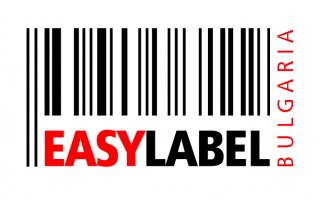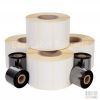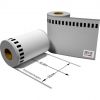No more torn and faded labels!
Date: 13 Oct 2016
Dymo Polypropylene(PP) Labels
What is Polypropylene?
Polypropylene, also called PP, is a plastic material which is resistant to water, oil and chemicals. Your labels will never rip, discolor or fade again. The water resistance ensures that the labels will withstand water and extremely high (+ 80 ° C) or low (-30 ° C) temperatures. Another major advantage of PP labels is that they can be used with oils and fats.
The clarity and brilliance of the PP gives the labels a chic and luxurious look.
When should you choose PP labels?
You can use the PP labels both inside and outside. For example on flower pots, which are outside throughout the year. The PP labels do not fade, despite the sun, rain or watering of the plants. The PP labels are also ideal for the food industry. Not only because of the water and solid color characteristics, but also because of the bright and shiny appearance of the labels. Our PP labels are suitable for continuous use where durability is a must.
New products
Date: 12 Oct 2016
We have in stock new products. Choose from our large inventory of high quality items.
Radio Frequence (RF) Labels
Date: 12 Oct 2015
The currently most widely used label in the electronic article surveillance is an RF-label. These labels are used in almost all sectors, so far from supermarkets, department stores to professional markets.
The construction of an RF label is quite simple. The electronic part of the label is aligned on the bottom and is usually applied directly with a permanent adhesive on the product. A coil which also serves as an antenna is connected to a small capacitor. Together they form a resonant circuit with an external high frequency field of about 8.2 MHz. When an activated label approaches the vicinity of the detectors (Gates), which are usually placed at the exit of a store, the radio-electronic oscillator circuit triggers an alarm. The deactivation of electronic article surveillance is usually done after payment at the cashpoint, either by mechanical control of the electronic part or by electrical manipulation.
RF-tags are for single use only, so-called "Hard-Tags" in contrast are reusable. In a lot of products (for example shoes) RF-components are implanted during the manufacturing process and will remain there till the end of the products life cycle.
The covering material on the top of the label is usually made of paper but can also be PE or PP material. The label can be imprinted with the particular information by a suitable printer. It also can be pre-imprinted by us, for example with a colored corporate symbol or it could be delivered with a so-called "blindcode". Also conventional is the so-called "nature-version". This is intended for discouraging among the electronic effect as well.
Pros:
- Low cost
- The possibility to combine electronic retail security and pricing
Cons:
- An RF tag is always tied to a minimum size
- Тhe electronic oscillator circuit can be relatively easily manipulated by metallic and magnetic objects or electronic devices.







